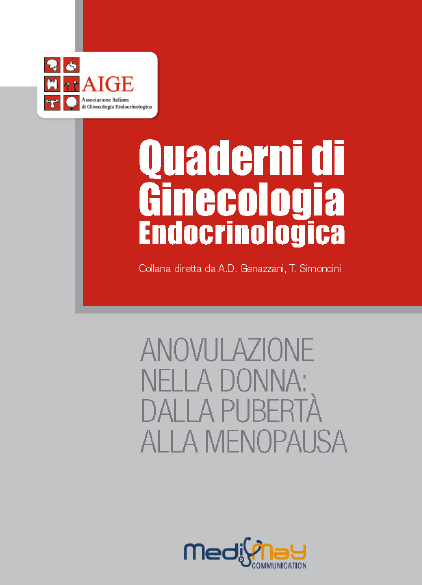-
Melissa Freizinger, Debra L. Franko, Marie Dacey, Barbara Okun, Alice D. Domar
The prevalence of eating disorders in infertile women
Fertil Steril 2010;93:72–8Abstract
Objective: To determine the prevalence of eating disorders in a sample of infertile women.
Design: A descriptive comparative two-group design in which collected data were compared with a published community sample.
Setting: Private infertility center.
Patient(s): Eighty-two participants beginning their first gonadotropin/intrauterine insemination (IUI) treatment cycle completed self-report measures that assessed eating disorder pathology and exercise habits. Each subject was telephone-administered the Structured Clinical Interview for DSM-IV Axis I Disorders (SCID-I) Module H (Eating Disorders) and a demographic questionnaire.
Intervention(s): None.
Main Outcome Measure(s): Past or current diagnosis of an eating disorder.
Result(s): Seventeen participants (20.7%) met criteria for a past or current eating disorder, which is five times higher than the U.S. lifetime prevalence rate. None of the participants who met the criteria for an eating disorder had disclosed their past or current diagnosis to their reproductive endocrinologist.
Conclusion(s): Infertility clinics are likely to be treating women with a past or current eating disorder history. Therefore, an eating disorder screening tool should be included in the initial intake, because these patients may be at a higher risk for negative maternal and fetal outcomes than non–eating disorder patients. Additionally, patients with a past or current eating disorder may not disclose this information to reproductive health care providers, which may limit providers’ ability to provide appropriate medical and psychologic referrals. -
Helena J. Teede, Caroline Meyer, Samantha K. Hutchison, Sophia Zoungas, Barry P. McGrath, Lisa J. Moran
Endothelial function and insulin resistance in polycystic ovary syndrome: the effects of medical therapy
Fertil Steril 2010;93:184–9Abstract
Objective: To assess the interaction between insulin resistance and endothelial function and the optimal treatment strategy addressing cardiovascular risk in polycystic ovary syndrome.
Design: Randomized controlled trial.
Setting: Controlled clinical study.
Patient(s): Overweight age- and body mass index–matched women with polycystic ovary syndrome.
Intervention(s): Six months metformin (1 g two times per day, n = 36) or oral contraceptive pill (OCP) (35 mg ethinyl E2–2 mg cytoproterone acetate, n = 30).
Main Outcome Measure(s): Fasting and oral glucose tolerance test glucose and insulin levels, endothelial function (flow-mediated dilation, asymmetric dimethylarginine, plasminogen activator inhibitor-1, vonWillebrand factor), inflammatory markers (high-sensitivity C-reactive protein), lipids, and hyperandrogenism.
Result(s): The OCP increased levels of glucose and insulin on oral glucose tolerance test, high-sensitivity C-reactive protein, triglycerides, and sex-hormone binding globulin and decreased levels of low-density lipoprotein cholesterol and T. Metformin decreased levels of fasting insulin, oral glucose tolerance test insulin, high-density lipoprotein cholesterol, and high-sensitivity C-reactive protein. Flow-mediated dilation increased only with metformin (+2.2% +4.8%), whereas asymmetric dimethylarginine decreased equivalently for OCP and metformin (-0.3 + 0.1 vs. -0.1 + 0.1 mmol/L). Greater decreases in plasminogen activator inhibitor-1 occurred for the OCP than for metformin (-1.8 + 1.6 vs. -0.7 + 1.7 U/mL).
Conclusion(s): In polycystic ovary syndrome, metformin improves insulin resistance, inflammatory markers, and endothelial function. The OCP worsens insulin resistance and glucose homeostasis, inflammatory markers, and triglycerides and has neutral or positive endothelial effects. The effect of the OCP on cardiovascular risk in polycystic ovary syndrome is unclear. -
Ljiljana Kocoska-Maras, Angelica Lindn Hirschberg, Birgitta Bystrm, Bo von Schoultz, Angelique Flter Rdestad
Testosterone addition to estrogen therapy – Effects on inflammatory markers for cardiovascular disease
Gynecological Endocrinology 2009; 25(12): 823–827Abstract
Objective. To analyze the effects of testosterone addition to estrogen therapy in comparison with estrogen alone on cardiovascular risk factors in postmenopausal women.
Methods. Fifty surgically postmenopausal women were included in this double-blind, placebo-controlled and randomized study to receive daily oral treatment with estradiol valerate 2 mg þ placebo (E/P) or estradiol valerate 2 mg þ testosterone undecanoate 40 mg (E/T) for 24 weeks and then switched to the other regimen for another 24 weeks. Sex hormones, High sensitivity CRP (hsCRP), Interleukin-6 (IL-6), Tissue necrosis factor (TNF)-a, Insulin-like growth factor binding globulin (IGFBP-1), vascular cell adhesion molecule (VCAM)- 1, and homocysteine were analyzed at baseline and after 6 and 12months.
Results. Estradiol and androgens increased as expected during the treatments. After 6 months of E/P, increases of hsCRP and IGFBP-1 and a decline of VCAM were recorded, whereas IL-6, TNF-a, and homocysteine were unchanged. When testosterone was added to estrogen, the increase of IGFBP-1 and decline in VCAM was similar as with estrogen treatment alone. However, testosterone addition counteracted the estrogen-induced rise in hsCRP but had no effects on IL-6, TNF-a, and homocysteine.
Conclusion. Data suggest that testosterone addition to estrogen treatment in postmenopausal women has a modest influence on inflammatory markers and there were no apparent adverse effects. On the contrary, the estrogen-induced increase in hsCRP was suppressed. -
Felicia Cosman, Nancy E. Lane, Michael A. Bolognese, Jose R. Zanchetta, Pedro A. Garcia-Hernandez, Karen Sees, James A. Matriano, Kim Gaumer, Peter E. Daddona
Effect of Transdermal Teriparatide Administration on Bone Mineral Density in Postmenopausal Women
J Clin Endocrinol Metab 2010, 95: 151-158Abstract
Context: Treatment of osteoporosis with an anabolic agent, teriparatide [human PTH 1-34 (TPTD)], is effective in reducing incident fractures, but patient resistance to daily sc injections has limited its use. A novel transdermal patch, providing a rapid, pulse delivery of TPTD, may provide a desirable alternative.
Objective: The aim of the study was to determine the safety and efficacy of a novel transdermal TPTD patch compared to placebo patch and sc TPTD 20-µg injection in postmenopausal women with osteoporosis.
Design: Our study consisted of 6-month, randomized, placebo-controlled, positive control, multidose daily administration.
Patients: We enrolled 165 postmenopausal women (mean age, 64 yr) with osteoporosis.
Interventions: A TPTD patch with a 20-, 30-, or 40-µg dose or a placebo patch was self-administered daily for 30-min wear time, or 20 µg of TPTD was injected daily.
Outcomes: The primary efficacy measure was mean percentage change in lumbar spine bone mineral density (BMD) from baseline at 6 months.
Results: TPTD delivered by transdermal patch significantly increased lumbar spine BMD vs. placebo patch in a dose-dependent manner at 6 months (P < 0.001). TPTD 40-µg patch increased total hip BMD compared to both placebo patch and TPTD injection (P < 0.05). Bone turnover markers (procollagen type I N-terminal propeptide and C-terminal cross-linked telopeptide of type I collagen) increased from baseline in a dose-dependent manner in all treatment groups and were all significantly different from placebo patch (P < 0.001). All treatments were well tolerated, and no prolonged hypercalcemia was observed.
Conclusion: Transdermal patch delivery of TPTD in postmenopausal women with osteoporosis for 6 months is safe and effective in increasing lumbar spine and total hip BMD -
E. Jedel, M. Waern, D. Gustafson, M. Landén, E. Eriksson, G. Holm, L. Nilsson, A.-K. Lind, P.O. Janson, E. Stener-Victorin
Anxiety and depression symptoms in women with polycystic ovary syndrome compared with controls matched for body mass index
Hum. Reprod. 2010 25: 450-456Abstract
BACKGROUND Anxiety and depression are more prevalent in women with polycystic ovary syndrome (PCOS) than in those without this disorder. Possible confounding effects of overweight and obesity are suggested. The aim was to compare symptoms of anxiety and depression in women with PCOS and controls matched for age, body weight and body mass index (BMI).
METHODS Women with PCOS (n = 30) and controls (n = 30) were recruited from the community. Persons with ongoing psychotropic medication were excluded. All potential participants underwent gynecological examination to confirm case–control status. Participants completed the self-reported versions of the Brief Scale for Anxiety (BSA-S) and Montgomery Åsberg Depression Rating Scale (MADRS-S).
RESULTS Women with PCOS had a higher BSA-S score compared with controls (median, range: 10.5, 1–24 versus 5.0, 0–28, P < 0.001). They scored higher on the following four individual symptoms: reduced sleep (2.0, 0–5 versus 0, 0–2, P < 0.001), worry (1.5, 0–4 versus 0, 0–6, P = 0.004), phobias (1, 0–4 versus 0, 0–3, P < 0.001), and pain (1, 0–3 versus 0, 0–2, P < 0.001). No statistical difference was demonstrated regarding MADRS-S scores (10.0, 0–27 versus 5.5, 0–24, P = 0.053). Only one of the nine MADRS-S symptoms, reduced sleep, which is also included in the BSA-S, differed between cases and controls.
CONCLUSIONS Several anxiety symptoms distinguished women with PCOS from a control group matched on BMI. A better understanding of the symptoms is needed to identify and alleviate anxiety symptoms in this vulnerable group. -
M.J. De Souza, R.J. Toombs, J.L. Scheid, E. O’Donnell, S.L. West, N.I. Williams
High prevalence of subtle and severe menstrual disturbances in exercising women: confirmation using daily hormone measures
Hum. Reprod. 2010 25: 491-503Abstract
BACKGROUND: The identification of subtle menstrual cycle disturbances requires daily hormone assessments. In contrast, the identification of severe menstrual disturbances, such as amenorrhea and oligomenorrhea, can be established by clinical observation. The primary purpose of this study was to determine the frequency of subtle menstrual disturbances, defined as luteal phase defects (LPD) or anovulation, in exercising women, with menstrual cycles of 26–35 days, who engage in a variety of sports, both recreational and competitive. Secondly, the prevalence of oligomenorrhea and amenorrhea was also determined via measurement of daily urinary ovarian steroids rather than self report alone.
METHODS: Menstrual status was documented by daily measurements of estrone and pregnanediol glucuronide and luteinizing hormone across two to three consecutive cycles and subsequently categorized as ovulatory (Ovul), LPD, anovulatory (Anov), oligomenorrheic (Oligo) and amenorrheic (Amen) in sedentary (Sed) and exercising (Ex) women.
RESULTS: Sed (n = 20) and Ex women (n = 67) were of similar (P > 0.05) age (26.3 ± 0.8 years), weight (59.3 ± 1.8 kg), body mass index (22.0 ± 0.6 kg/m2), age of menarche (12.8 ± 0.3 years) and gynecological maturity (13.4 ± 0.9 years). The Sed group exercised less (P < 0.001) (96.7 ± 39.1 versus 457.1 ± 30.5 min/week) and had a lower peak oxygen uptake (34.4 ± 1.4 versus 44.3 ± 0.6 ml/kg/min) than the Ex group. Among the menstrual cycles studied in the Sed group, the prevalence of subtle menstrual disturbances was only 4.2% (2/48); 95.8% (46/48) of the observed menstrual cycles were ovulatory. This finding stands in stark contrast to that observed in the Ex group where only 50% (60/120) of the observed menstrual cycles were ovulatory and as many as 50% (60/120) were abnormal. Of the abnormal cycles in the Ex group, 29.2% (35/120) were classified as LPD (short, inadequate or both) and 20.8% (25/120) were classified as Anov. Among the cycles of Ex women with severe menstrual disturbances, 3.5% (3/86) of the cycles were Oligo and 33.7% (29/86) were Amen. No cycles of Sed women (0/20) displayed either Oligo or Amen.
CONCLUSIONS: This study suggests that approximately half of exercising women experience subtle menstrual disturbances, i.e. LPD and anovulation, and that one third of exercising women may be amenorrheic. Estimates of the prevalence of subtle menstrual disturbances in exercising women determined by the presence or absence of short or long cycles does not identify these disturbances. In light of known clinical consequences of menstrual disturbances, these findings underscore the lack of reliability of normal menstrual intervals and self report to infer menstrual status.
Letteratura scientifica
-
Melissa Freizinger, Debra L. Franko, Marie Dacey, Barbara Okun, Alice D. Domar
The prevalence of eating disorders in infertile women
Fertil Steril 2010;93:72–8 -
Helena J. Teede, Caroline Meyer, Samantha K. Hutchison, Sophia Zoungas, Barry P. McGrath, Lisa J. Moran
Endothelial function and insulin resistance in polycystic ovary syndrome: the effects of medical therapy
Fertil Steril 2010;93:184–9 -
Ljiljana Kocoska-Maras, Angelica Lindn Hirschberg, Birgitta Bystrm, Bo von Schoultz, Angelique Flter Rdestad
Testosterone addition to estrogen therapy – Effects on inflammatory markers for cardiovascular disease
Gynecological Endocrinology 2009; 25(12): 823–827 -
Felicia Cosman, Nancy E. Lane, Michael A. Bolognese, Jose R. Zanchetta, Pedro A. Garcia-Hernandez, Karen Sees, James A. Matriano, Kim Gaumer, Peter E. Daddona
Effect of Transdermal Teriparatide Administration on Bone Mineral Density in Postmenopausal Women
J Clin Endocrinol Metab 2010, 95: 151-158 -
E. Jedel, M. Waern, D. Gustafson, M. Landén, E. Eriksson, G. Holm, L. Nilsson, A.-K. Lind, P.O. Janson, E. Stener-Victorin
Anxiety and depression symptoms in women with polycystic ovary syndrome compared with controls matched for body mass index
Hum. Reprod. 2010 25: 450-456 -
M.J. De Souza, R.J. Toombs, J.L. Scheid, E. O’Donnell, S.L. West, N.I. Williams
High prevalence of subtle and severe menstrual disturbances in exercising women: confirmation using daily hormone measures
Hum. Reprod. 2010 25: 491-503






